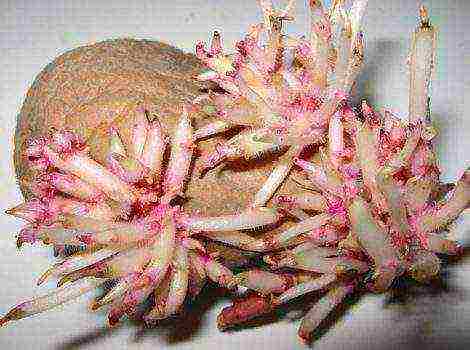Content
- 1 A detailed description of the zucchini variety iskander f1
- 1.1 Description and characteristics of the zucchini variety Iskander f1
- 1.2 Ripening time, advantages and disadvantages
- 1.3 Preparing seeds for planting
- 1.4 Preparing the soil for growing crops
- 1.5 Planting material planting technology
- 1.6 Care Tips
- 1.7 Diseases and their prevention
- 1.8 Harvesting and storage rules
A detailed description of the zucchini variety iskander f1
According to statistics, Iskander zucchini is one of the most popular types in Russia... To understand how the vegetable has earned people's love and fame, it is worthwhile to study its properties in more detail.
Description and characteristics of the zucchini variety Iskander f1
The species in question is notable for the fact that her skin is very tender, like the flesh... According to the description, the oblong, elongated fruit has a milky white surface with a greenish tint.
The variety is of Dutch origin... He began his journey through Russian cities from the Krasnodar Territory. It was there that its first shoots were grown.
Ripening time, advantages and disadvantages
The main positive characteristics that Iskander can boast of: high yields and early ripening... For a season, gardeners collect up to 17 kilograms of zucchini from 1 bush.
Another plus is that the zucchini can withstand subzero temperatures... In addition, it does not affect its productivity: even in cold weather, the variety continues to bear fruit well.
Large vegetable farms appreciate this plant for its unpretentiousness.
Unlike many other varieties, this variety has a pleasant taste, but it is not stored for so long, like thick-chested subspecies.

Preparing seeds for planting
There are two ways to plant this species.: grow seedlings or sow seeds directly in open ground. In both cases, preliminary preparation is made.
Seeds need moisture to germinate... For this purpose, they are soaked in warm water with a temperature of at least 20 degrees. For the best effect, you can add useful trace elements to the liquid.
After this procedure, the contents are wrapped in a dense damp cloth for three days. Care must be taken that the coating does not dry out completely, but also does not get too wet. The room temperature is +25 - 26 degrees.
Iskander zucchini are classified as F1, because the seeds of the fruit grown in the garden are not suitable for planting next year.
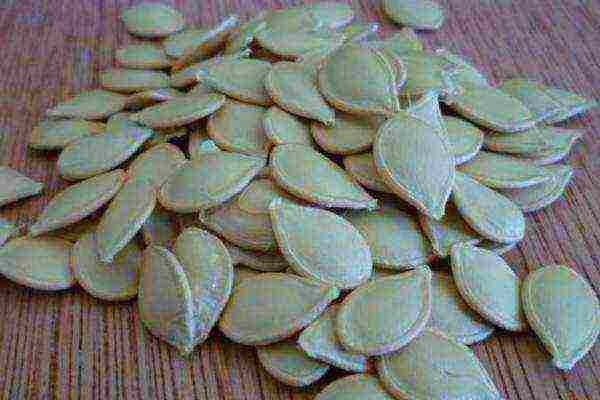
Preparing the soil for growing crops
Land for planting has been prepared since autumn... It is dug up, fertilized, in the spring it is already loosening, leveling and marking the beds. The planting material is placed in the holes at a distance of 60 centimeters from each other.
This will help reduce the number of pests that are common to them.
This early variety can be planted outdoors in mid-April., the threat of frost has barely passed.
The plant is patient with the cold, but loves warmth, therefore it is planted in places warmed by the sun.
The seedlings are immersed shallowly into the ground, about 7-8 cm and sprinkled. After planting, it is required to water them well with warm water.
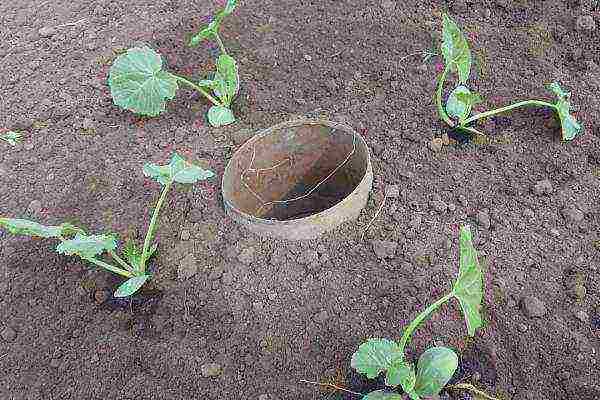
Planting material planting technology
If planting is carried out without going through the stage of growing seedlings, its timing is postponed by May or end of June:
- In loosened soil, grooves are prepared in advance.
- The prepared seed must be placed with a sharp tip down and planted in the grooves, in the soil warmed up to 12 degrees.
- Sprinkle so that the top layer is not too thick.
- Drizzle.
In order to protect the planting from frost, sowing should be postponed until the end of May... At first, a special covering film is used.
Care Tips
After the young plants have taken root, the gardener will have to again inspect the beds and thin them out, removing non-viable, weak shoots... In their place, you can plant new seedlings.
Roots need good air access. The soil is regularly loosened and weeds removed... Active watering takes place before the growing season. Then it should be applied periodically.
In a rainy summer, you can water only once a week, or less often, depending on the situation.
The most common mistake: watering under the spine during active sun... It is more correct to make a strip along the landings and gradually pour water into it.
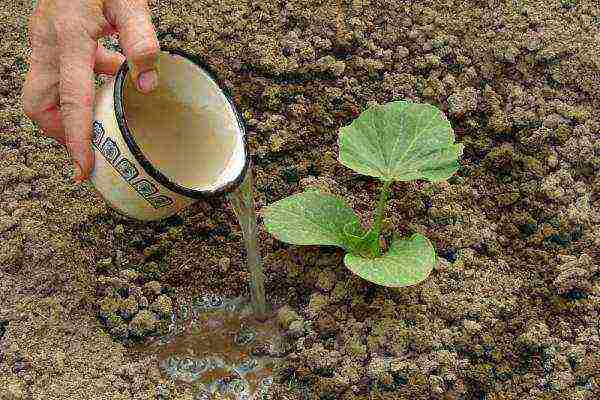
Diseases and their prevention
There are 2 types of diseases that squash is susceptible to: pests and fungal infections.
Insects that harm a vegetable include:
- wingless;
- melon aphid;
- spider mite.
If the leaves turn brown and begin to dry, then this indicates the presence of anthracnose... It occurs as a result of excessive moisture.
Powdery mildew is round spots that look like a bloom of flour. Reasons: cold and damp.
If the spots begin to grow and turn brown, then this is called a false form of the disease. It needs to be treated, as well as anthracnose.
High humidity and large temperature fluctuations provoke the development of white rot.
To protect the bushes from the cold, insulated beds are created: compost and plant debris are placed in the holes of 30 centimeters.
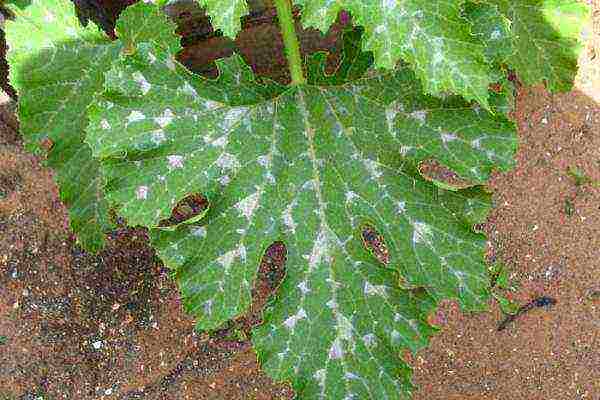
Harvesting and storage rules
This vegetable is harvested throughout the season.without waiting for its full maturation. It is only necessary for collecting seeds, but in the case of a hybrid variety, it is completely useless.
The cut is made at an angle at a distance of 4-5 cm to the end of the stalk, its line should be straight. For this, tools are used. Twisting and pulling out the fruit with your hands is wrong.
Iskander is stored for up to 5 months... The best safety is given to it by observing some rules:
- A vegetable for storage should be plucked at the moment when its skin is hard to the touch, and it emits a dull sound when tapped. An immature species will start to deteriorate much faster.
- The air temperature should not exceed 10 degrees.
- The room must be dry.
- For the winter version, samples plucked shortly before frost are suitable.
Providing optimal conditions for the plant, in return, you can get a rich harvest of high quality.


